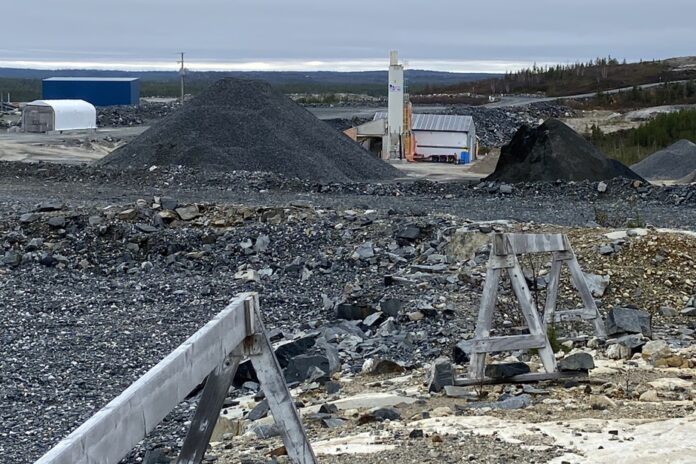The mining component of the Nemaska Lithium project – which also includes a processing plant in Bécancour – promises attractive spin-offs, according to the results of a feasibility study carried out by one of the promoters and the conclusions of which were analyzed by experts.
This flagship company in the Quebec battery industry would only take 17 months to recover its investment for the first portion of the project. With mineral reserves estimated at 26.5 million tonnes, the lifespan of this open-cast mining complex could be 34 years. Its power requirements are estimated at 17 megawatts in winter and 11 megawatts in summer.
The information is contained in a voluminous pre-feasibility study of around 400 pages carried out by Livent and filed with the Securities and Exchange Commission – the US stock market watchdog. This American supplier of processed lithium owns 50% of Nemaska Lithium. The other half belongs to the Quebec state.
This part of the project is expected to require investments of around 475 million. If all goes according to plan, construction of the mining complex is expected to be completed in February 2025 and production is expected to begin the following year.
Nemaska Lithium aims to transform lithium extracted from the Whabouchi mine, about 300 km from James Bay, to then produce lithium hydroxide – essential in the manufacture of lithium-ion batteries for electric vehicles – in the industrial park and port of Bécancour.
This complex is one of the Legault government’s cards to attract manufacturers of cathodes – which represent around 40% of the cost of a battery – to Quebec.
“The mine promises to pay off,” says André Gaumond, founder of Virginia Mines, one of the greatest Quebec exploration successes of recent decades. With such a short recovery time, this gives a lot of leeway to the rest of the project. »
Taking into account the investments required for the mine and the processing plant, the bill for Nemaska Lithium’s ambitions will cost at least 2 billion. So far, Quebec plans to inject up to 425 million into the second version of the company, which was sheltered from its creditors at the end of 2019, causing the companies to lose tens of millions of dollars. taxpayers.
The company estimates the value of each ton of spodumene produced in Nord-du-Québec at approximately US$2,000. This hypothesis is plausible, believes Mr. Jébrak. On the markets, the price per tonne fluctuates around US$1,800.
On the mining complex, the concentrator should be located more than half a kilometer northeast of the deposit. The spodumene must then be transported to Bécancour. Mr. Jébrak emphasizes that Livent’s study offers few details on the financial impact of this step.
Since the start of the year, Nemaska Lithium has lost its two main managers. The position of President and CEO Spiro Pippos was eliminated earlier this year. Last May, the company announced the departure of Chief Operating Officer Robert Beaulieu.
In Quebec, the Sayona company has already started exporting spodumene concentrate from La Corne, in Abitibi. The first shipment of 20,500 tonnes was sold internationally last summer.















